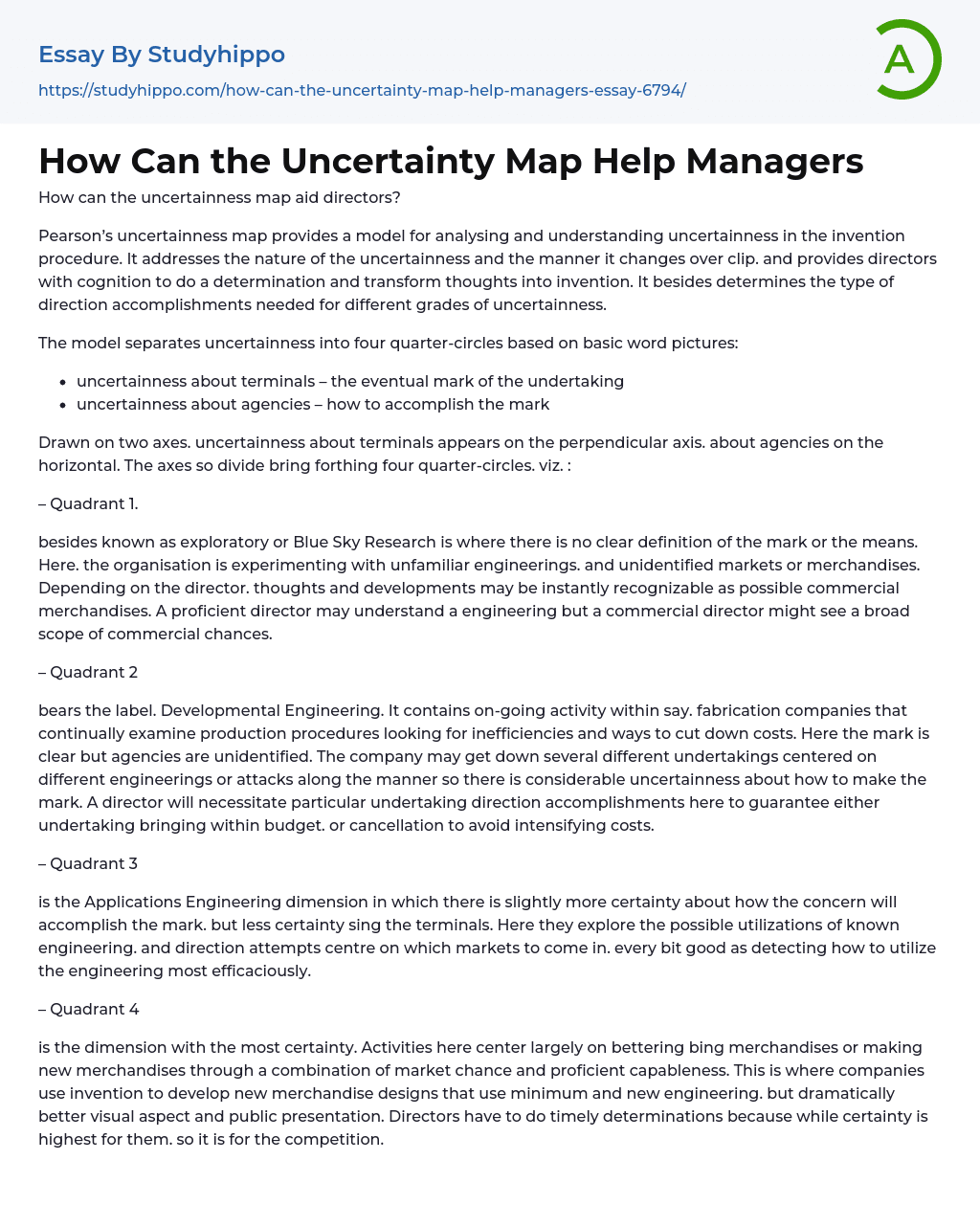How can directors benefit from Pearson's uncertainty map? The uncertainty map analyzes and helps understand uncertainty in the innovation process. It considers the nature of uncertainty and how it changes over time, providing directors with knowledge to make decisions and turn ideas into innovation. It also identifies the types of management skills required for different levels of uncertainty. The model divides uncertainty into four quadrants based on basic characteristics:
- Uncertainty about goals - the ultimate objective of the project
- Uncertainty about means - how to achieve the goal
It is represented on two axes.
On the perpendicular axis, there is uncertainty about terminals, while on the horizontal axis, uncertainty revolves around agencies. These axes divide the space into four quarter-circles, namely Quadrant 1, also referred to as exploratory or Blue Sky Research. I
...n this quadrant, there is no clear definition of the target or the means.
The organization is exploring new technologies and unknown markets or products. The potential commercial products may be immediately recognized by some directors and the technical director may understand a technology, while the commercial director may see a wide range of commercial opportunities.
– Quadrant 2
bears the label Developmental Engineering. It contains on-going activity within say, fabrication companies that continually examine production procedures looking for inefficiencies and ways to cut down costs.
Here, the objective is evident but the agencies involved are unknown. The company may undertake multiple projects using various technologies or approaches along the way, leading to significant uncertainty on how to reach the objective. To ensure project delivery within budget or avoid escalating costs
a manager needs specialized project management skills.
- Quadrant 3
represents the Applications Engineering dimension where there is slightly more certainty regarding how the business will achieve the objective.
However, there is less certainty surrounding the use of terminals. In this area, they investigate the potential uses of established engineering and focus on which markets to enter, as well as determining the most efficient way to utilize the technology.
- Quadrant 4
This dimension is characterized by the highest level of certainty. Here, activities primarily revolve around improving existing products or creating new products by capitalizing on market opportunities and technical capability.
This is the stage where companies use technology to develop new product designs with minimal and innovative engineering, leading to greatly enhanced aesthetics and performance. Managers must make quick decisions because both they and their competitors have a high level of certainty. This is the crucial moment when a company can either succeed or fail in the race to be the first to launch their product in the market.
Advertising and marketing executives get excited because the project is nearing the market with limited technical innovation.
- Genetic Engineering essays
- Bus essays
- Internal Combustion Engine essays
- Hybrid essays
- Electric Car essays
- Invention essays
- Mechanics essays
- Innovation essays
- Telephone essays
- Software Engineering essays
- Automobile essays
- Cycling essays
- Civil engineering essays
- Mechanical Engineering essays
- Bentley essays
- Animals essays
- Charles Darwin essays
- Agriculture essays
- Archaeology essays
- Moon essays
- Space Exploration essays
- Sun essays
- Universe essays
- Birds essays
- Horse essays
- Bear essays
- Butterfly essays
- Cat essays
- Dolphin essays
- Monkey essays
- Tiger essays
- Whale essays
- Lion essays
- Elephant essays
- Mythology essays
- Time Travel essays
- Discovery essays
- Thomas Edison essays
- Linguistics essays
- Journal essays
- Chemistry essays
- Biology essays
- Physics essays
- Seismology essays
- Reaction Rate essays
- Roman Numerals essays
- Scientific Method essays
- Mineralogy essays
- Plate Tectonics essays
- Logic essays




